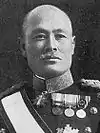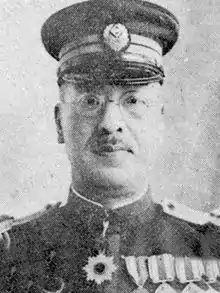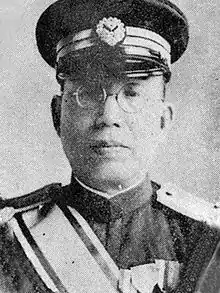Governor-General of Taiwan
The governor-general of Taiwan (Japanese: 臺灣總督, romanized: Taiwan Sōtoku) was the head of the Government-General of Taiwan in the Japanese era (including Formosa and the Pescadores) when they were part of the Empire of Japan, from 1895 to 1945.
| Governor-General of Taiwan | |
|---|---|
| 臺灣總督 | |
 Seal of the governor-general | |
| Government-General of Taiwan | |
| Reports to | Prime Minister of Japan |
| Residence | Official residence of the Governor-General of Taiwan |
| Seat | Office of the Governor-General of Taiwan, Taihoku, Taiwan |
| Appointer | Emperor of Japan |
| Precursor | President of Formosa |
| Formation | 10 May 1895 |
| First holder | Kabayama Sukenori |
| Final holder | Rikichi Andō |
| Abolished | 25 October 1945 |
| Superseded by | Governor of Taiwan Province |
The Japanese governors-general were members of the Diet, civilian officials, Japanese nobles or generals. They exercised their power on behalf of the sovereign of Taiwan (the emperor of Japan) until the dissolution of the empire when the dominion came under administration of the Republic of China and was renounced by Japan.[1]
Governors-general
Military Rikken Seiyūkai Kenseikai Rikken Minseitō
Timeline
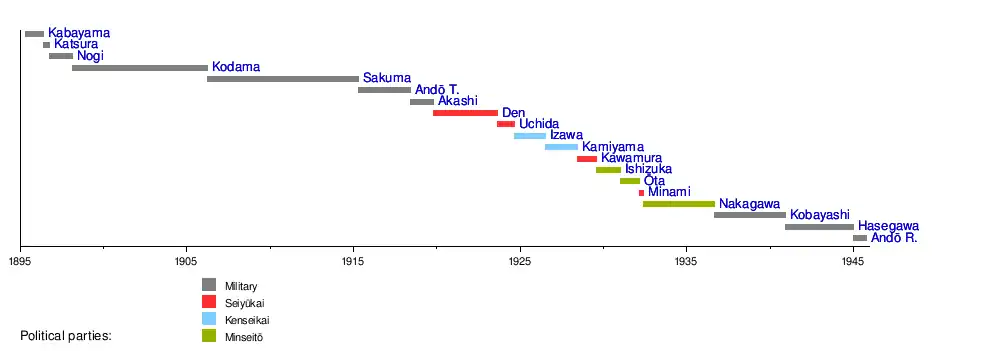
See also
- Governor of Formosa
- Governor of Taiwan Province
- Japanese Governor-General of Korea
- History of Taiwan
- Japanese Resident-General of Korea
- List of rulers of Taiwan
- Political divisions of Taiwan (1895–1945)
- Railway Department of the Office of the Governor-General of Taiwan
- Taiwan after World War II
- Timeline of Taiwanese history
References
- Edward I-te Chen (1970). "Japanese Colonialism in Korea and Formosa: A Comparison of The Systems of Political Control". Harvard Journal of Asiatic Studies. Harvard-Yenching Institute. 30: 126–158. doi:10.2307/2718768. JSTOR 2718768.
External links
Wikimedia Commons has media related to Governors-General of Taiwan.
This article is issued from Wikipedia. The text is licensed under Creative Commons - Attribution - Sharealike. Additional terms may apply for the media files.


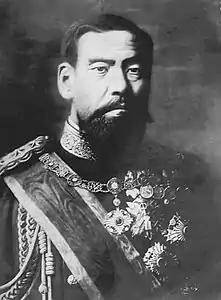



.jpg.webp)
